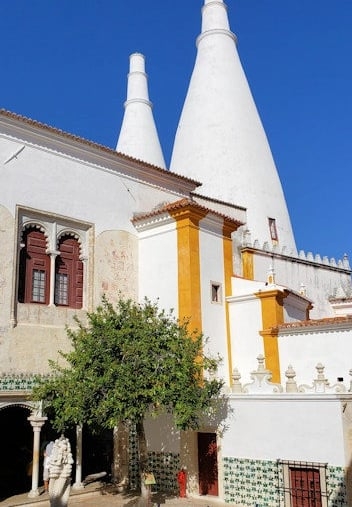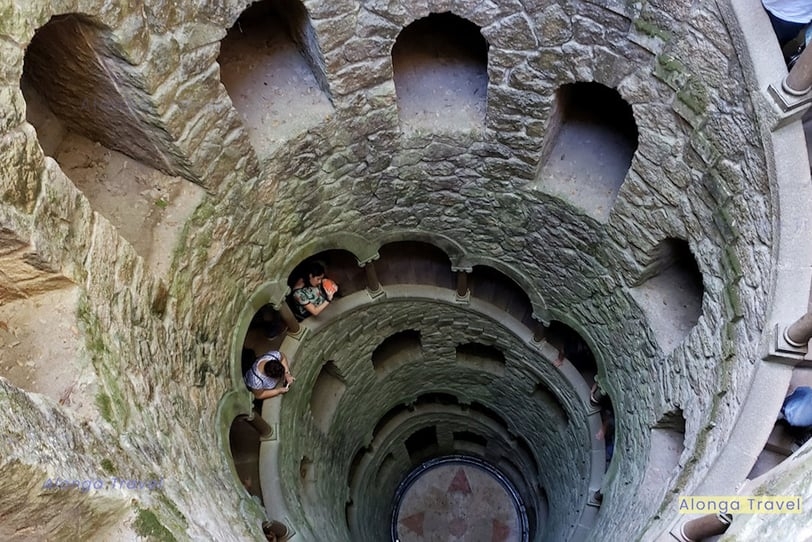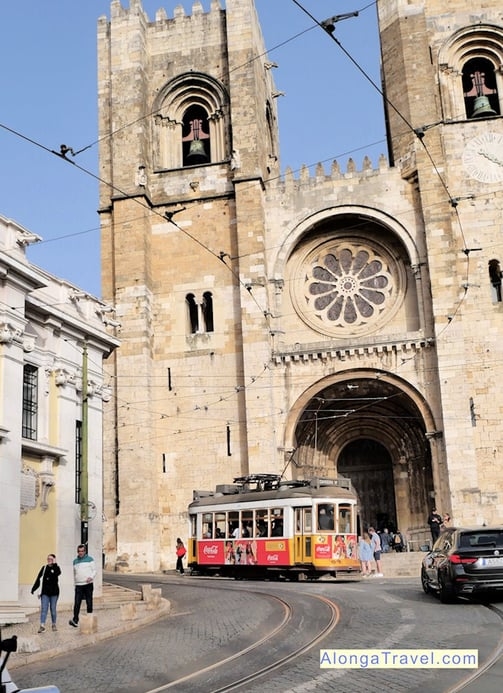King Dinis I of Portugal and his building campaigns & additions
King Dinis of Portugal was a remarkable monarch who ruled from 1279 to 1325. He was known as the Farmer King and the Poet King, because he improved the economy and the culture of his country.
He also had a great interest in architecture, and he sponsored several building projects throughout Portugal
King Dinis of Portugal
During his reign, King Dinis of Portugal focused on building and improving various aspects of the kingdom. One of his notable achievements was granting certain towns the privileges of cities. This meant they had more rights and freedoms.
By bestowing city privileges, King Dinis aimed to promote economic growth, encourage trade, and attract merchants and artisans to these newly designated cities.
These privileges included self-governance, exemption from certain taxes, the right to hold markets and fairs, and the establishment of guilds and trade associations. These measures helped boost their economies and attract merchants and artisans.
King Dinis also understood the importance of fortifications for protection. He constructed many castles throughout the kingdom to defend against external threats. These castles not only showcased his power but also provided jobs for the people and supported local economies.
Additionally, King Dinis invested in public infrastructure like roads, bridges, and aqueducts. These projects improved transportation and communication, making it easier for trade and travel. Discover the best way to get around Portugal today as a result of these early advancements.
Bridges, in particular, played a significant role in connecting different parts of the kingdom.
King Dinis’s efforts in building cities, fortifications, and infrastructure contributed to the growth and prosperity of Portugal. His actions promoted economic development, strengthened defenses, and improved connectivity throughout the kingdom.
King Dinis’s of Portugal building campaigns
During his reign, King Dinis of Portugal accomplished a few ambitious building campaigns and made significant additions to the kingdom.
One of these building campaigns was in Sintra, a town near Lisbon that was his favorite residence. Read here to learn how to get to Sintra.
Some of the building campaigns that King Dinis initiated or completed in Sintra are:
Sintra National Palace
Sintra National Palace, or Palácio Nacional de Sintra, was originally built by the Moors, but it was renovated and expanded by King Dinis and his successors.
He added the Chapel and renovated some rooms that no longer exist today.
National Palace of Sintra is an amazing place, don’t miss it! Read my other post about everything you will see in Sintra National Palace.

Castle of the Moors
Castle of the Moors (Castelo dos Mouros), a medieval fortress that overlooks the town of Sintra. King Dinis ordered the restoration and reinforcement of the castle walls, towers, and gates, as well as the construction of a cistern and a chapel inside the castle.
He also planted pine trees around the castle to prevent soil erosion and provide wood for shipbuilding.
Monastery of Santa Maria da Arrábida
Monastery of Santa Maria da Arrábida (Mosteiro de Santa Maria da Arrábida), a Franciscan monastery located in the Arrábida Natural Park, near Sintra. Kig Dinis donated land and money to the Franciscan Order to build this monastery, which was completed in 1310. The monastery has a simple and austere architecture, reflecting the Franciscan ideals of poverty and humility. It also has a beautiful cloister and a library with rare manuscripts.

Some other places that King Dinis of Portugal built or renovated in Sintra, Portugal are:
University of Coimbra (1290)
King Dinis is credited with establishing the University of Coimbra in 1290. The university was initially located in Lisbon but was later moved to Coimbra in 1308. It became one of the oldest universities in continuous operation in the world and played a crucial role in shaping Portugal’s intellectual and cultural landscape.
Convent of São Francisco, Santarém (late 13th century)
King Dinis sponsored the construction of the Convent of São Francisco in Santarém. The convent is notable for its Gothic architecture and the intricate detail in its interior. It became a significant religious and cultural center during that era.
Castle of Leiria (late 13th century)
King Dinis ordered the reconstruction and expansion of the Castle of Leiria. The castle was strategically located on a hilltop and played a role in defending the kingdom. The renovations added defensive features and improved the castle’s overall structure.
Castle of Óbidos (early 14th century)
King Dinis also contributed to the expansion and improvement of the Castle of Óbidos. The castle, located on a hilltop, was reinforced and enhanced during his reign, showcasing his efforts to strengthen the kingdom’s defenses.
He also added the Chapel of St. Martin (Capela de São Martinho), which has Gothic arches and stained-glass windows.
Church of St. Peter of Penaferrim
Igreja de São Pedro de Penaferrim, also Saint Peter’s of Sintra, originally known as the Church of Saint Peter, had its origins as a church building project initiated by Afonso Henriques following the reconquest of Lisbon in 1147.
This Gothic church that has undergone restoration by King Dinis in 1283. The church has a nave, a transept, and a main chapel, as well as a bell tower and a sacristy. The church also has several tombs of nobles and cleric.
The Castle of Pombal
Castelo de Pombal, a medieval castle located in the town of Pombal, near Sintra.
The Castle of Pombal wasn’t founded by King Dinis I. Construction of the fortress started in the mid-12th century and continued for several generations. The Castle’s of Pombal strategic location and fortified structures made it a significant military post during the ongoing conflicts between Christian and Muslim forces.
But King Dinis played a significant role in the establishment and development of the castle. It was under his patronage that the castle became a defensive stronghold during the Christian reconquest of the Iberian Peninsula.
The Christian reconquest of the Iberian Peninsula, also known as the Reconquista, began in the early 8th century with the Muslim invasion and lasted until the late 15th century.
The process of recapturing the territory from Muslim rule was gradual and spanned several centuries, ultimately resulting in the establishment of Christian kingdoms in the region.
The final stage of the Reconquista was completed in 1492 with the conquest of Granada, the last remaining Muslim stronghold in Spain.
Castle of Pombal features a unique architectural design, characterized by its robust stone walls, towers, and battlements. The castle has a polygonal shape, with four towers and two gates. The castle also has a keep, a cistern, and a chapel. It is located on a hilltop, providing strategic advantages for defense.
Over the centuries, the castle underwent various modifications and expansions to adapt to changing military technologies and requirements.
The castle was an important military and administrative center for the region, and it was also the birthplace of the Marquis of Pombal, who was a prime minister of Portugal in the 18th century.
Interesting fact. Did you know that Lisbon as we know it today had Marquis de Pombal thank for it to a large degree?
Marquis de Pombal contributed remarkable city planning for Lisbon that needed to be reconstructed after the Lisbon Earthquake of 1755. It is thanks to him that Lisbon has wider boulevards and grid-like streets In Baixa neighborhood.
Castle of Pombal underwent significant restoration in the 20th century to preserve its historical elements, and structural integrity.
Today, you can explore the castle’s interior, walk along its fortified walls, and take in panoramic views of the surrounding countryside. It also serves as a venue for cultural events and exhibitions.
Some indirect influence by previous land and structure purchases by King Dinis I:
Church of St. Mary Magdalene
Igreja de Santa Maria Madalena, a Baroque church that was built on the site of an older church that was founded by King Dinis in the 14th century.
The church is located in the village of Colares, near Sintra. The church has a single nave, with an octagonal dome and an altarpiece with paintings of saints. The church also has an organ and a choir loft.
The church is famous for its miraculous image of St. Mary Magdalene, which is said to have healing powers.
Quinta da Regaleira
Quinta da Regaleira, a Gothic Revival estate that was built on the land that belonged to King Dinis in the 14th century. The estate was acquired by António Augusto Carvalho Monteiro in the 19th century, who hired an Italian architect to design his dream house. The estate has a palace, a chapel, and several outbuildings, all decorated with symbols and motifs from mythology, alchemy, Freemasonry, and Templarism. The estate also has a garden with grottoes, wells, fountains, and statues.
The Monserrate Palace
Palácio de Monserrate, an Orientalist palace that was built on the site of an old chapel that was founded by King Dinis in the 14th century. The palace was commissioned by Francis Cook in the 19th century, who hired an English architect to create an exotic and romantic residence. The palace has an Indian-inspired facade, with arches and domes. The palace also has several rooms with Moorish decorations and stained glass windows. The palace also has a park with tropical plants, waterfalls, and ponds

The Se Cathedral
Se Cathedral in Lisbon was built in the 12th century by King Afonso Henriques to celebrate when he took back the city from the Moors.
King Dinis I ordered some decorative accents to the Cathedral.
These castles and fortifications were significant contributions made by King Dinis to enhance the defenses and security of different regions of Portugal during his reign.

Tram 28 stopped in front of Lisbon Cathedral
King Dinis impact on Portuguese society and history
King Dinis of Portugal, is known for several other accomplishments and contributions during his reign. In addition to his involvement in building projects and renovations, he had a multifaceted impact on Portuguese society and history.
Here are some additional aspects for which King Dinis is known:
Infrastructure development
Apart from the construction of buildings and castles, King Dinis oversaw various infrastructure projects, including roads and bridges, which facilitated trade and communication within the kingdom.
Promotion of the Portuguese language
King Dinis was a strong advocate for the Portuguese language. He believed that it should be used for official documents and administration instead of Latin, which was commonly used by the clergy and scholars at the time. This support for the vernacular language helped in shaping and strengthening the Portuguese language as it is known today.
Agricultural and economic reforms
King Dinis implemented various agricultural and economic reforms aimed at boosting the kingdom’s economy. He encouraged the cultivation of crops like wheat, vines, and olive trees, and he supported irrigation projects to improve agricultural productivity. These efforts contributed to the overall prosperity of the country.
Creation of the first maritime insurance policy
King Dinis is credited with issuing the first known maritime insurance policy in 1294. This policy protected merchants and shipowners from financial losses due to maritime accidents, theft, or other unforeseen events. This innovation played a role in fostering maritime trade and exploration.
Efforts to curb nobility’s power
King Dinis attempted to centralize power and limit the influence of the nobility. He enacted laws to protect the rights of peasants and serfs, often at odds with the interests of the nobility. This approach aimed to strengthen the monarchy’s authority and promote a fairer society.
Support for exploration and trade
King Dinis showed interest in overseas exploration and trade. Although his reign predates the Age of Exploration, his efforts laid some groundwork for Portugal’s later maritime achievements, such as Vasco da Gama’s voyages.
Cultural patronage
King Dinis was a patron of the arts and culture. He supported troubadours and poets, fostering a vibrant cultural scene in his court. His support for learning and the establishment of the University of Coimbra also contributed to Portugal’s intellectual growth.
Political stability
King Dinis’ reign is often characterized by relative political stability compared to some of the turbulent periods that came before and after. His focus on governance, economic development, and social welfare helped maintain stability within the kingdom.
Creation and maintenance of forests and agricultural projects
King Dinis was known for his support of forestation and agricultural projects, particularly the reforestation of the Leiria pine forest. This initiative was aimed at ensuring a steady supply of timber for construction and shipbuilding.
King Denis died on 7 January 1325 at Santarém, and was buried in the Monastery of Saint Denis in Odivelas, near Lisbon.
I hope you will get to see all the castles described in this post.
Let’s connect on social media!
Found this post helpful? Please, consider supporting my work and the website maintenance cost, thank you!
Subscribe to my periodic newsletter for my new posts. New here? Visit my main Alonga Travel page.

